Episode #6: How Drift has built a unified content experience to build a robust community: Mark Kilens in Conversation with Natasha Puri
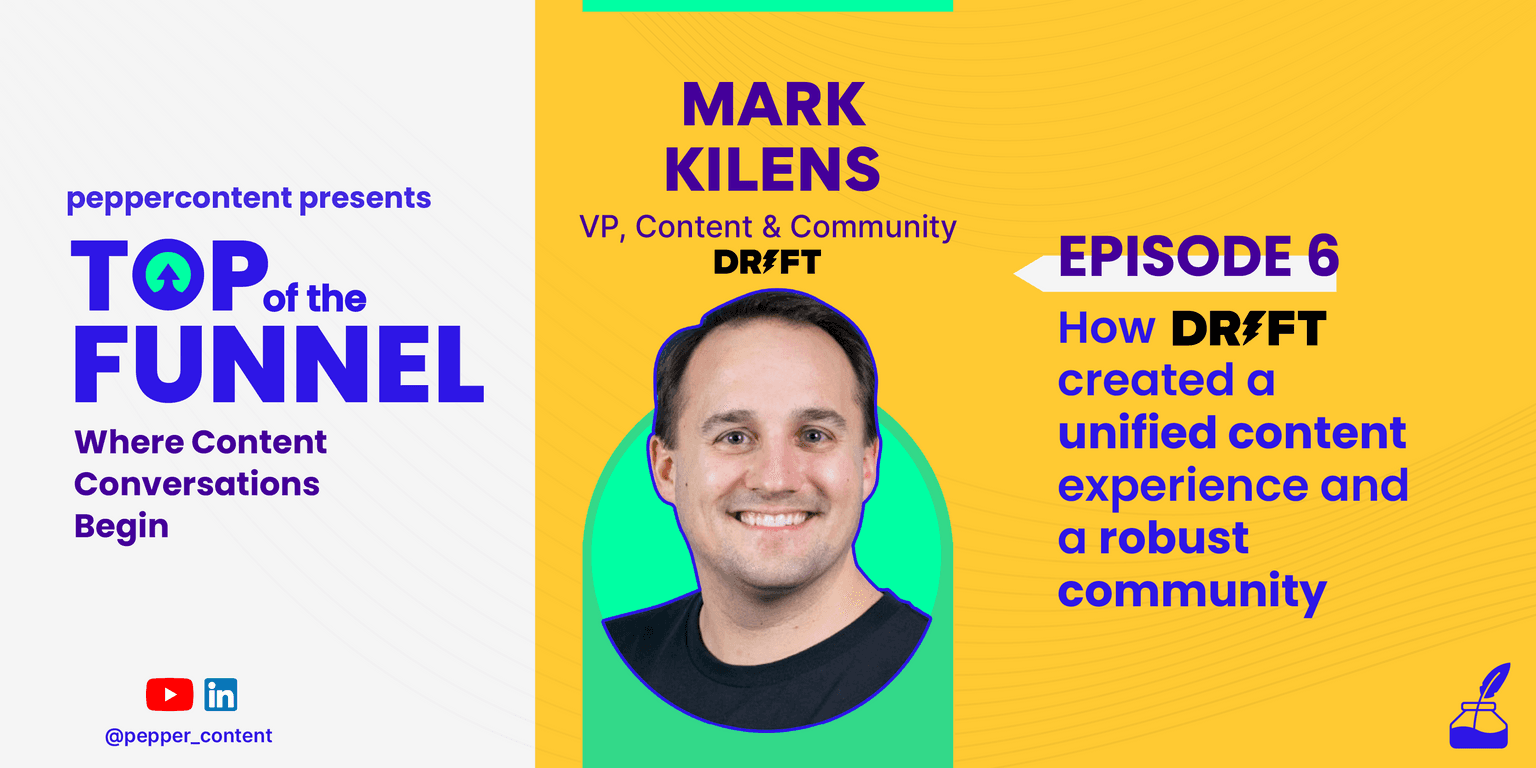
Content and community go hand in hand. Without a loyal community, a company would not be able to keep on generating leads and sustain itself. You can have a community only when you create content of value, that educates and give back to the consumers as much as they invest in your brand. Content and marketing professionals have to upgrade their game by designing relevant content that can be optimized across platforms, keeping consumer intent in mind.
Natasha Puri, Content Marketing Lead at Pepper Content, talks to Mark Kilens, Vice President of Content and Community at Drift. With over fifteen years of content marketing experience under his belt, Mark believes that content needs a community to thrive. If your content is valuable, it would spark positive engagement and feedback, which will sustain your brand. One has to optimize content in a way to build a reliable community.
Natasha Puri: Hello everyone. Welcome to the Top of the Funnel, the series where conversations about content begin. Our guest today is Mark Kilens, Vice President of Content and Community at Drift. This chat promises to be very informative and insightful for Mark had been with Hubspot since its initial days, before moving on to Drift. He is known for his engaging campaigns that consumers trust throughout the world.
You have been with HubSpot for about eight years as an inbound marketer, as someone who helped to set up the HubSpot Academy. Could you tell us about your journey so far, and what are you handling at Drift, and the role of content in it?
Mark Kilens: Content has been my passion for a long time. But, I did not realize that until I joined my first company out of school, some 8 years back, a small start-up. At that time, we in Hubspot were one of the first thousand businesses. This notion of creating content to attract people to our website, to educate and to build trust, to help them understand more about who you are as a business, what you stand for, what you believe in, all these different things, is a valuable way to generate and accelerate revenue.
We saw some pretty great success with that and that is where my journey of content marketing or inbound marketing began. Some people use these two terms synonymously but in my opinion, they are different. So, I think content marketing matured a lot since 2008-2009 and now, it is creating a media-centric type of culture.
It is not just about the content. It is about the experiences that surround the content, and how do you use your content to move someone, to turn that fan into a customer and that customer into a super fan.
So, that is a lot more work that you have to do. You have to make sure that your content is created in a way that is going to reach the right person at the right time. There’s a lot more than you have to consider in content marketing now.
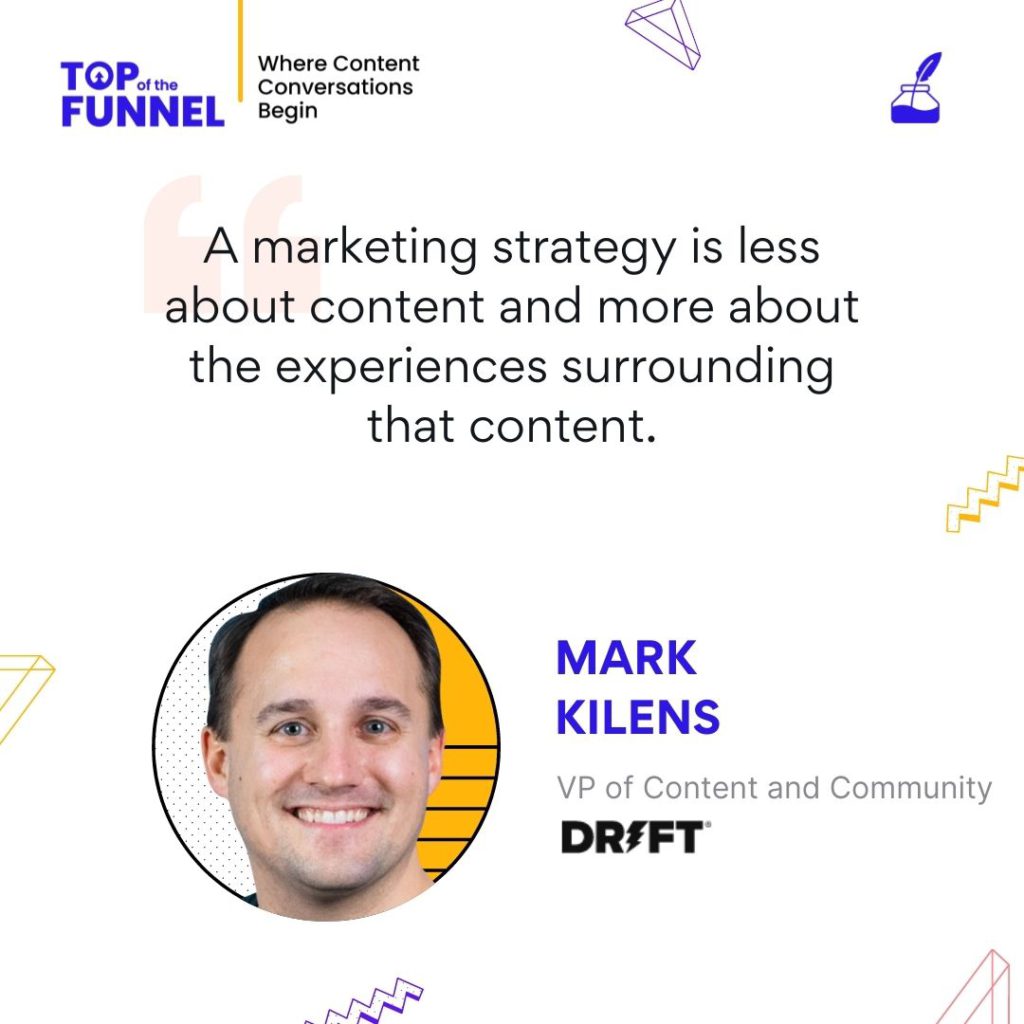
Natasha Puri: So, at Pepper, where I work now, I lead content for them. We say that every company is a content company. So, let us move on to what you are doing at Drift now. You are driving content and community through various initiatives like the Drift Insider, blog, various content off-sites, and online events. I would love to know how content and community come together. It is an interesting role, content, and community together. If you could tell me more about that, more specifically how do B2B companies use content to build a community?
Mark Kilens: Content and community should be very closely aligned, if not on the same line. Content sparks conversation. A company, in my opinion, needs to have a point of view in the marketplace. It needs to have a story to go around that point of view. So, how do you tell that story? You tell that by creating content in a variety of formats but that is also not just enough. Every company needs to have a content discipline, a media-type strategy.
The content or media efforts are either going to be in-house or user-generated like created by influencers. Every brand needs to have that as a part of its marketing and growth strategy. So, when it comes to how to design that experience, we take the approach of an expert.
The Drift Insider is a brand that spans all over content and all over community building. It is applied to all the content, blogs, or books, or classes, or certification. It’s where you can become a member to get more exclusive benefits and have actual conversations with other Insider members, both Drift and non Drift customers.
But, the point of it is about unifying the experience, helping people find the thing that they are looking for, or they might not even know they are looking for, using information that we know about them. So, using Drift Insider is a way for them to personalize the Drift experience, to create a deeper connection with them, to help them feel that they belong in the community. This is built on principles, and this community uses these principles as a way to coalesce together. It is also based on purpose, mission, and vision.
So, your content in many ways is settling these expectations and beliefs in people, as they are reading and listening to it. Maybe they want to take some action, talk to some people, or get involved with that, and that is where the community comes in. They are very much related. It is a disservice to your community to not use a messaging cord to build a sense of trust within the community, a sense of belonging. It is not the whole. It is a sum of all that we have talked about. After all, the primary focus is to use content to create a deeper engagement within your audience.
Natasha Puri: How is content structured at Drift? How are the roles divided?
Mark Kilens: Recently we have made some changes around here. There are three folks working on content and community, that are part of my team. One of them focuses more on the media side that includes blogs, podcasts, and newsletters. And, another team manager overlooks that. This is top-of-the-funnel content, kind of mix and matches here and there, more media-centric and brand-centric, but not exclusive to that by any means.
Then, there is another person, who works on content that is more on the thought leadership area, more middle of the funnel content, that is digital and physical books, the research, reports, presentations, webinars in a virtual setting, hopefully going to be in person soon.
And, then there is another person working on product content. She is responsible for classes and certification and really involved with the community. She is focused on providing people, who are becoming Insider members with the best experience, deepening the engagement.
The members who are participating in places that Drift participates in, like Linkedin, and Twitter, or Instagram, pull others into our community. The Drift-owned community is where they find helpful and valuable content, what they love to learn. It is like a two-way process. But, we really believe in having a person who focuses on the community. A traditional social media manager role is very important from a social platform standpoint but also from a community standpoint.
Natasha Puri: More often than not, content marketers miss out on the distribution aspect. Could you walk me through the process at Drift, like do you focus more on the in-house media content so that people come to you, or do you do guest posting and so on? Is there a strategy behind it?
Mark Kilens: We have two teams, one for demand generation for existing businesses, and one for demand generation for new businesses. We partner very closely with the demand generation team, including the digital team, and make sure that we are creating the right content for the right purpose. We use personas for that purpose.
Secondly, we never create content for just the sake of creating it. Also, we make sure that the demand generation and digital team are actually going to use that content so that, it actually gets seen by a number of people. So, that’s one of the mistakes that most content marketers make. They do not partner enough with maybe other teams on the marketing team, or the sales team, the customer success team, to make sure their content is seen and aligned, but also used as a part of the campaign and the digital side they are on-paid search and more social side of things.
Every 90 days or so, we plan on what we need to refresh, reuse, repackage, or maybe reposition for different audiences, because we are looking at our goals through revenue, pipeline, sales traffic, and aligning our content strategy to that. It makes our content much stronger. I think that’s something that most teams should be doing.
On the B2B side, you should be looking at content on how is it driving business results. Any other content, for example, our 6 podcast shows, in many ways might be hard to quantify, but if you are smart, you are going to reuse that podcast content for things that you cannot more directly quantify from a demand standpoint. You need to have a content strategy that is holistic and directed to generate business revenue.
Natasha Puri: Repurposing content is often a missed opportunity. A lot of marketers don’t work that into their initial strategy. It is a last-minute plan usually.
Mark Kilens: You should always start with the who and why you are doing it. Who are you creating the content for? Why are you doing it?
Natasha Puri: I’d love to pick your brain from your time at Hubspot, especially your time at building the Hubspot Academy, and what were those early conversations like? How did it begin and eventually when you left, what did the Academy look like?
Mark Kilens: When I was a customer I realized that there were not enough resources, content, and education to help us be successful. So, I joined Hubspot. And, after a year and a half, I was able to start its nascent, weekend, project to prove that this was important and that this was gonna impact our net dollar attention, our customer satisfaction rates and net promoter scores, product usage, and adoption.
We were mindful of what metrics we were trying to move and change so that, we could present a compelling business case. Customers were responding to this in a highly positive way. So, we decided that we should turn it into a small team, instead of just us, three people, and the rest is kind of history. We knew from the beginning that this content and community would help us build the Hubspot brand. When you have a product that is more transformational in nature, that can change habits, a product that involves a person changing their habits and sitting with it on the weekends, you need to be very helpful and also thoughtful in how to help them get it right.
You need to help the person study what they cannot do right, make them understand the new way, and they have to bridge that to learn something new. It requires a lot of patience on your end to ensure that you can provide customers with the right level of knowledge, the right level of content, and sequence that out.
We started with topics like what is inbound marketing? What is the inbound methodology concept? Then, we became more product-centric and said that this is how you apply it to HubSpot and so on. Then, we went even above inbound and guided them to think of social media, email marketing, kind of spanning the whole process from thought leadership to brand content, focusing on more educational content that marketers and sales professionals would care about. That is exactly what we are doing with Drift and the Drift acceleration program, helping people connect all those dots together so that, they can understand the whole process, and know where to start from.
You should use the content for all purposes. Use a holistic type of content to make a customer interested in your product, but also content in community building to help a customer become successful. It will help you deliver against your promise of what you said in the sales process and marketing. Then you help them to be truly successful from a changed perspective. They have changed their behavior, part of their routine because you were able to teach them something new. And that is really the kind of change I have seen in the last fifteen years and that is the thing all businesses need to do. They need to actually change in some way. The product alone is not gonna make them change. You need the wisdom and the knowledge to go on with it.
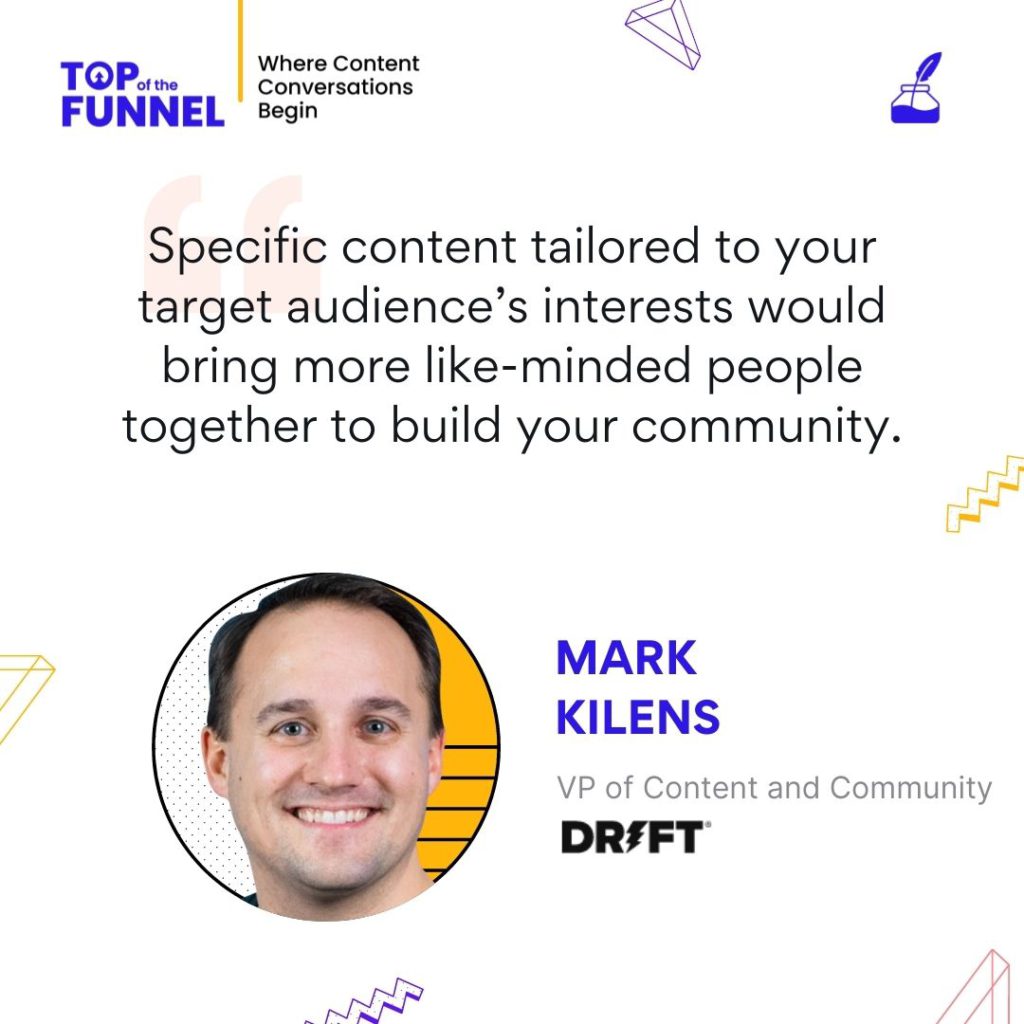
Natasha Puri: Now, a lot of companies have to bring that value in educating their customers. But, do you think, that now everyone has a course? With the pandemic, everyone wants to be a thought leader. Do you think this bubble will burst, or there always would be some players based on the quality of their content?
Mark Kilens: It is going to be more experience-based. You cannot just have a course anymore. You need to have other things going along with that course. Is that course gonna build a relationship with anyone? Can you get that person to a point where they keep coming back? It goes back to experience. How are you creating that course content that also brings in the community elements of your brand?
How are you bringing people together to learn from each other? What makes that experience unique? How can you be more specific in what you are teaching? Can you not be so horizontal, but be more vertical in what you teach? It is going to get more refined.
It is going to get more unified like you cannot think of content as fragments anymore. Larger businesses have multiple content teams. You need to have one content team, who is going to access their resources to the entire community, meaning their business, existing customers, its potential customers. I believe that is the way it should be designed to create a more unifying experience.
Natasha Puri: Scaling becomes a huge challenge for many companies, consistently and effectively. Could you share three or four lessons on scaling content smartly?
Mark Kilens: Is it necessary to scale your content?
Natasha Puri: Hubspot now has domain authority on inbound marketing and content marketing and that includes creating a large amount of high-quality content in terms of blogs, resources, and so on. How can organizations do that more effectively?
Mark Kilens: I would not do it as Hubspot did. It is not going to work for the vast majority of businesses. You should double down and focus. Focus on things that are rooted in the ambition of your business. First of all, root in the vision and principles of your company. Then, create content to tell your story, the narrative, your point of view. These are the things that build a solid content marketing foundation, a brand experience, quite frankly. Once you do that, then it is a matter of what your go-to-market strategy looks like. How do you take your go-to-market strategy and what you are selling and use content with that?
If it’s a transactional type of purchase, that’s a low-cost item and your ASP is also low. Your business strategy would be very different from someone selling a 1000$ product that takes like 90 days to 200 days to purchase. So, you have to look at the business’s go-to-market setup and what you are selling. Without having those foundation elements in place, you would be able to make content, get some traction, but you would not be able to scale it because it does not match the way the business is going to market.
Natasha Puri: Can you talk to us about any interesting campaign you worked on recently that you would call successful and how would you measure its impact?
Mark Kilens: We had our fifth, virtual, Revenue Growth campaign recently. An event is an experience and content. An event is a very important content asset. It was quite successful as we start with the who and the why. We make creative briefs for a large content asset, like an event, and certification, like a free tool. We outline the creative brief and whatever it takes to make that event successful.
This is where all the teams come together from customer marketing, domain generation, the creative team, community, and social to outline how we are gonna actually make this successful, how are we going to message it, how are we going to position it, how are we going to use channels to get this out in front of people, how are we going to nurture people. That is why probably it is successful. It makes sure that the message we say in markets and across all channels remains constant. It remains consistent across the entire journey of the customer lifecycle and experience. Everything is in one place and everyone can pull copies and briefs from that one place.
Natasha Puri: In a post-Covid world, what does the future of content marketing look like?
Mark Kilens: It is going to be an intersection of content and community. That is the future of content marketing. It has to be more two-way than one-way. How can you make it more interactive, and engaging? How can we guide people to the right content? How can we finally fulfill the promise of personalizing the content? Content marketing is going to fulfill that with the help of Artificial intelligence. AI is the next way of a lot of industries, including marketing. It is not going to help so much on the creation side. How do we get the right content to the right people? How do we measure its efficacy? How can we be smarter in how we create content? This is how I think AI is going to help content marketing.
Latest Blogs
Explore how Google’s 2025 AI search updates triggered ranking chaos. Learn actionable strategies to adapt your SEO for AI Overviews, zero-click searches, and SERP volatility. Stay ahead now.
Learn how to rank on AI search engines like ChatGPT, Perplexity, and Gemini by optimizing your content for authority, structure, and relevance. Stay ahead in AI-driven search with this strategic guide.
Explore the best healthcare SEO services for your medical practice. Improve online visibility and effectively reach more patients in need of your services.
Get your hands on the latest news!
Similar Posts
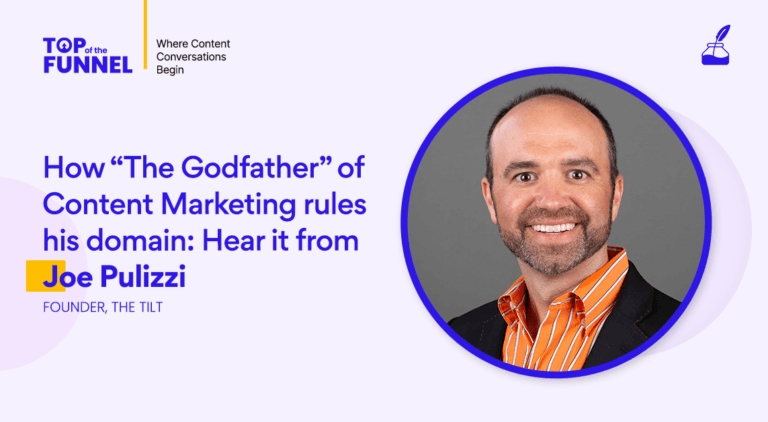
Expert Speak
18 mins read
Season 2 Episode #1 How “The Godfather” of Content Marketing Rules His Domain: Hear It From Joe Pulizzi
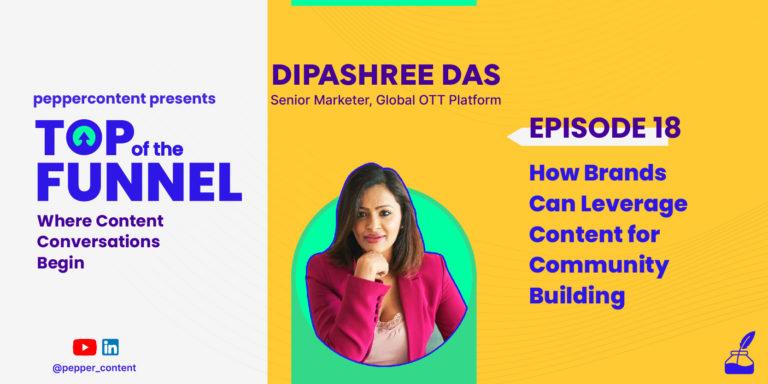
Expert Speak
16 mins read
Episode #18: How Brands Can Leverage Content for Community Building
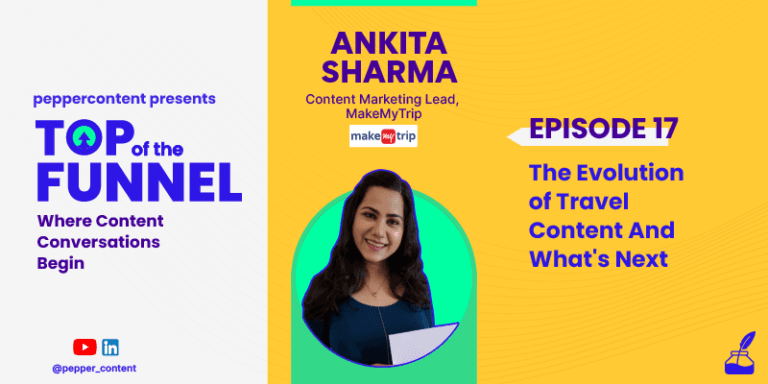
Expert Speak
11 mins read